Section 3.2 of the paper that you linked to says:
It is indeed possible to translate this rule into OWL 2—however this involves a transformation which we call rolification: The rolification of a concept A is a (new) role RA defined by the axiom A ≡ ∃RA.Self. Armed with rolification, we can now express rule (1) by the axiom …
OWL2 doesn't support expressing an axiom like Elephant(x) ∧ Mouse(y) → biggerThan(x,y) directly. As I understand it, you manually use the process of rolification that the paper describes to produce a new axiom that can be expressed in OWL2 directly.
Rolification
As to the specific process, if you want to express something like Elephant(x) ∧ Mouse(y) → biggerThan(x,y), you first rolify the classes Elephant and Mouse. This means that you introduce new roles (properties) RElephant and RMouse (but you do not delete the classes Elephant and Mouse). These new roles are such that RElephant(x,x) if and only if Elephant(x). This is enforced by adding the axioms
Elephant ≡ ∃RElephant.Self
Mouse ≡ ∃RMouse.Self
each of which is expressible in OWL2. With those two axioms in hand, you finally add the subproperty chain axiom
RElephant • topObjectProperty • RMouse ⊑ biggerThan
which is also expressible in OWL2. Since for any elephant e and any mouse m, we have that
RElephant(e,e)
topObjectProperty(e,m)
RMouse(m,m)
then by the subproperty chain axiom, we have that
biggerThan(e,m)
which is exactly what we wanted to express.
Axiom Syntax
In the input syntax accepted by Protege, these axioms are written as follows.
Elephant EquivalentTo R_Elephant some Self
Mouse EquivalentTo R_Mouse some Self
R_Elephant o topObjectProperty o R_mouse SubPropertyOf biggerThan
In Protege they appear as follows.



In N3:
@prefix : <http://www.example.org/rolification#> .
@prefix rdfs: <http://www.w3.org/2000/01/rdf-schema#> .
@prefix owl: <http://www.w3.org/2002/07/owl#> .
@prefix xsd: <http://www.w3.org/2001/XMLSchema#> .
@prefix rdf: <http://www.w3.org/1999/02/22-rdf-syntax-ns#> .
:Elephant
a owl:Class ;
owl:equivalentClass
[ a owl:Restriction ;
owl:hasSelf "true"^^xsd:boolean ;
owl:onProperty :R_Elephant
] .
:R_Elephant
a owl:ObjectProperty .
:biggerThan
a owl:ObjectProperty ;
owl:propertyChainAxiom
(:R_Elephant owl:topObjectProperty :R_Mouse) .
:Mouse
a owl:Class ;
owl:equivalentClass
[ a owl:Restriction ;
owl:hasSelf "true"^^xsd:boolean ;
owl:onProperty :R_Mouse
] .
<http://www.example.org/rolification>
a owl:Ontology .
:R_Mouse
a owl:ObjectProperty .
In RDF/XML:
<rdf:RDF
xmlns:rdf="http://www.w3.org/1999/02/22-rdf-syntax-ns#"
xmlns:owl="http://www.w3.org/2002/07/owl#"
xmlns="http://www.example.org/rolification#"
xmlns:xsd="http://www.w3.org/2001/XMLSchema#"
xmlns:rdfs="http://www.w3.org/2000/01/rdf-schema#">
<owl:Ontology rdf:about="http://www.example.org/rolification"/>
<owl:Class rdf:about="http://www.example.org/rolification#Elephant">
<owl:equivalentClass>
<owl:Restriction>
<owl:onProperty>
<owl:ObjectProperty rdf:about="http://www.example.org/rolification#R_Elephant"/>
</owl:onProperty>
<owl:hasSelf rdf:datatype="http://www.w3.org/2001/XMLSchema#boolean"
>true</owl:hasSelf>
</owl:Restriction>
</owl:equivalentClass>
</owl:Class>
<owl:Class rdf:about="http://www.example.org/rolification#Mouse">
<owl:equivalentClass>
<owl:Restriction>
<owl:onProperty>
<owl:ObjectProperty rdf:about="http://www.example.org/rolification#R_Mouse"/>
</owl:onProperty>
<owl:hasSelf rdf:datatype="http://www.w3.org/2001/XMLSchema#boolean"
>true</owl:hasSelf>
</owl:Restriction>
</owl:equivalentClass>
</owl:Class>
<owl:ObjectProperty rdf:about="http://www.example.org/rolification#biggerThan">
<owl:propertyChainAxiom rdf:parseType="Collection">
<owl:ObjectProperty rdf:about="http://www.example.org/rolification#R_Elephant"/>
<rdf:Description rdf:about="http://www.w3.org/2002/07/owl#topObjectProperty"/>
<owl:ObjectProperty rdf:about="http://www.example.org/rolification#R_Mouse"/>
</owl:propertyChainAxiom>
</owl:ObjectProperty>
</rdf:RDF>


